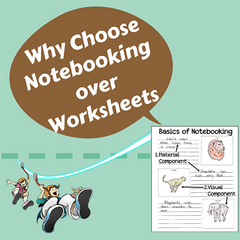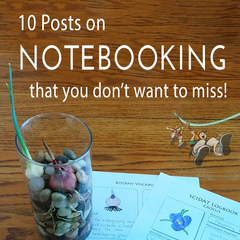In our homeschool, we have discussed the latest news in science informally for several years, but this year we began a more formal approach to using current events in our homeschool science instruction.
Here are the steps we take each week to incorporate the latest scientific news into our studies.
How to Add Current Events into your Homeschool Science Plan
Step 1: Choose the article.
You can subscribe to a kid’s science magazine, like Science News, or do a Google search. Here are a few websites to check:
Once I have collected a list of options, I peruse through them and pick one from the field of biology that I think will interest my daughter. We are currently studying biology as part of our homeschool science curriculum, so that’s why I try to stay in that particular field.
Step 2: Read the article.
I print off the article for my daughter to read because she does better with a piece of paper in her hands.
We typically do our current events studies on Fridays since we like to have a change of pace that day. I simply hand her the article I printed off and tell her to come to see me when she’s done reading it.
Step 3: Discuss the article.
When she is finished we talk about what she read. I ask questions like…
- What was the article about?
- What do you think about (a piece of research or an experiment that the article pointed out)?
- How does the article relate to (something that we have studied on the subject)?
- Did you find the article to be interesting?
- Do you agree with the opinion(s) stated in the article?
I usually read the article in its entirety ahead of time so that I will know if her answers are correct. This also gives me the ability to add to our discussion.
Step 4: Write a summary.
Once we finish our discussion, I ask my daughter to write 3-5 sentences on the article, including her opinion on it. Since we have already talked about the piece and her thoughts on it, this step is easy for her to do.
I have her write her paragraph on a notebooking page which we staple to the front of the article and then we store these in her science binder. (Download our Science in the News notebooking template here.)
Here’s an example of what she wrote last week…
Scientists found out that barbed quills require 60 to 70 percent less force to penetrate than quills with no barbs. They want to make a stitch that goes in like a barbed quill, but comes out like a regular needle. I liked this article because it shared about how nature is useful to science. (Summary of Inspiration from a Porcupine Quill on eScience News.)
I always read over her paragraph to make sure that she hasn’t copied any sentences directly from the article and to verify that it makes sense.
Wrapping it Up
Well, that’s my 4 easy steps for employing current events for homeschool science education. Our daughter has really enjoyed studying current events this year because it makes science come alive for her and gives a sense of purpose to what she is learning.
You can always add another step by having your student's study more about the science involved in the article. However, we choose not to because our science curriculum is already full enough.


